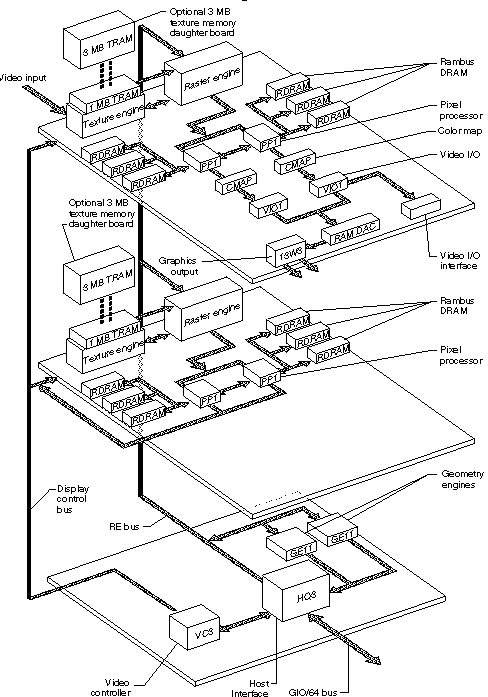
Section 4 IMPACT Graphics Subsystem

FIGURE 8 High IMPACT Block Diagram

The different IMPACT configurations have different supported features and performance characteristics. The addition of another GE11 and raster board on Maximum IMPACT doubles the theoretical geometry and fill rate performance with respect to High IMPACT. Expected fill and geometry should be close to this unless another bottleneck arises, like GIO bandwidth. The addition of a second raster board also adds another 13.5 MB of framebuffer memory, which allows Maximum IMPACT to support some visuals and buffers that High IMPACT cannot. For instance, Maximum IMPACT is able to support 12-12-12 RGB doublebuffered visuals at a resolution of 1280x1024 whereas High IMPACT is only capable of supporting these at 1024x768. Similarly, support of 1600x1200 and HDTV monitor resolutions are restricted to Maximum IMPACT. As mentioned earlier, going from 1 MB texture memory to 4 MB allows use of 48 bit texels as opposed to a maximum of 16 bit texels standard. See section 4.4.14, "Standard Visuals," for a detailed description and listing of supported visuals.
Generated with CERN WebMaker